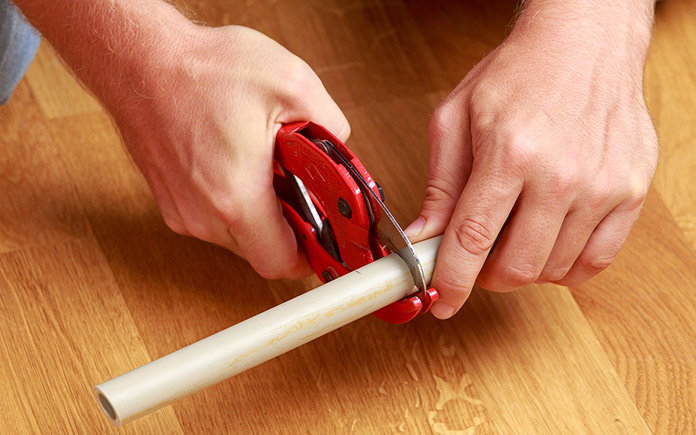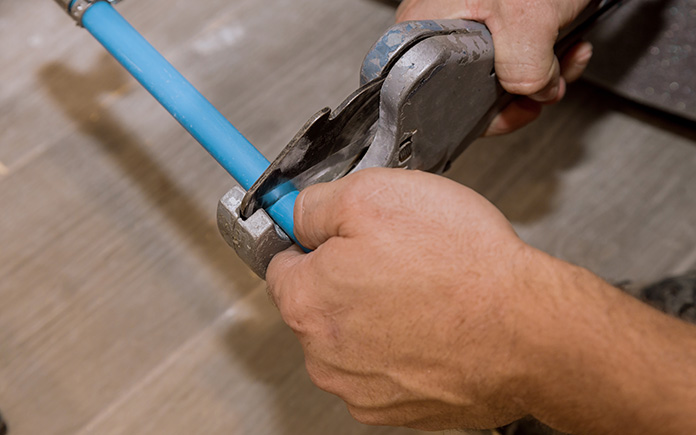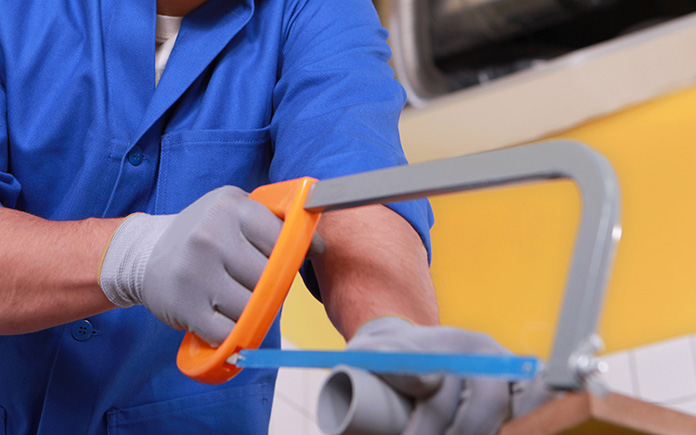
PVC pipe offers many benefits for home improvement projects — its inexpensive, durable, versatile and easy to use.
But it’s also vital that you cut and glue it correctly for home projects. The wrong techniques could damage the fittings, make it impossible for pieces to connect correctly, and cost you money and time.
Read on to learn the best methods for cutting and gluing PVC pipe, and which options are right for different projects.
How to Cut PVC Pipes
There are several tools for cutting PVC pipe at home; among them are PVC cutters, hacksaws and cable saws.

PVC Cutters
PVC cutters are the simplest, most cost-effective method for cutting PVC pipe. They produce a smooth cut with no jagged edges.
You can use simple cutters, which are great for 1-inch thickness or smaller, or heavy-duty cutters that can cut pipes up to 2 inches in thickness. Best of all? Some tools, such as the HDX Plumbing Multi-Tool, include a PVC cutter, giving you the biggest bang for your buck.
Using cutters is easy and requires little force — you simply place the cutter around the pipe and squeeze until the blade slices through the pipe.

Hacksaws
If you already have a hacksaw on hand and don’t want to purchase another tool, you’re in luck. Hacksaws are another efficient way to cut PVC pipe. Some people even prefer them because they can control the cut better.
To use a hacksaw, you’ll need a vise or a clamp to hold the pipe in place. From there, just saw through the pipe until you cut all the way through.
Keep in mind that saws have sharp teeth and can produce jagged edges — be careful and stay safe!
Cable Saws
You might find that you need to make cuts to PVC pipe after a project is finished. In those situations, cable saws are the best option. They’re perfect for cutting tough-to-reach pipes.
When using a cable saw, you wrap the cable around the part of the pipe you need to cut, forming a “U” shape. Then pull on each end of the cable, alternating until you’ve made the cut.



